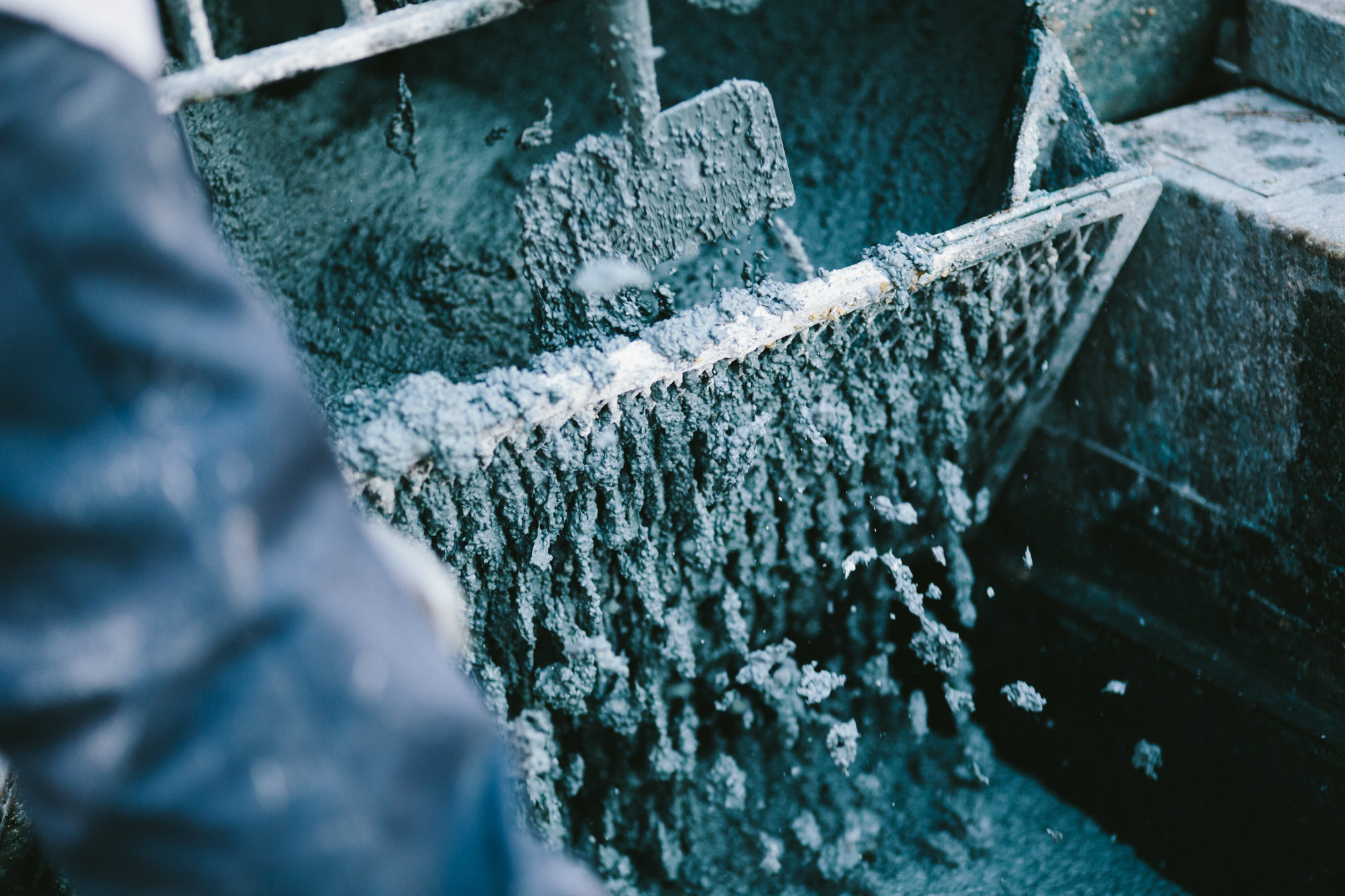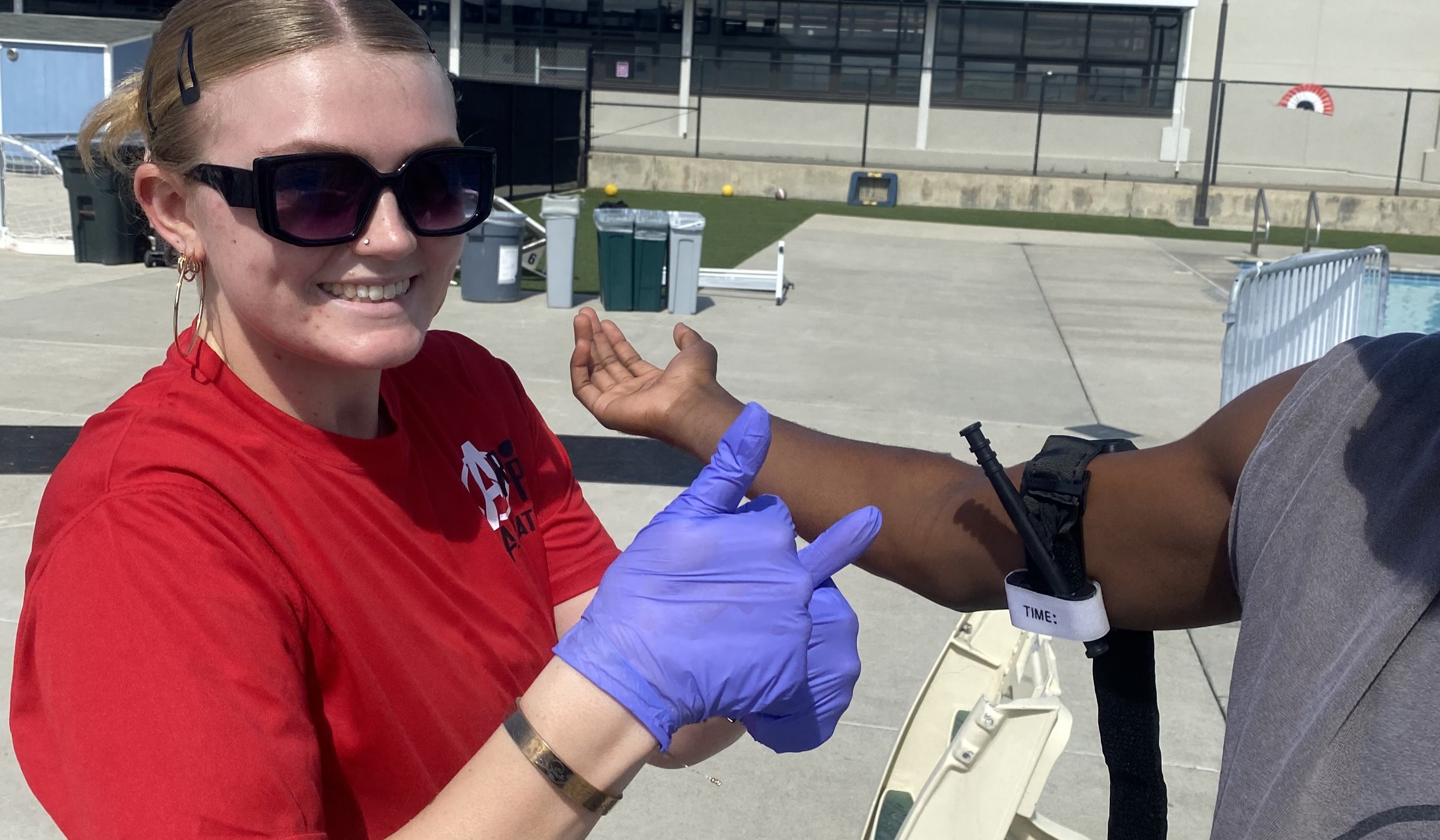
Colored interior finish materials have come a long way.
In the past, working with the materials could prove challenging for plaster and pebble applicators, who would have to determine their own ratios to create colors. Several years ago, finish suppliers began including pre-mixed pigments with their materials. In addition, some plasterers say, more of the pigments themselves have become higher-quality in the last few years.
“I think you’ll see that the quality has improved because you’ve had some major companies that have bought into our industry, acquiring smaller pigment manufacturers,” says Greg Garrett, director of technical services for the National Plasterers Council and owner of Applied Materials Technology in Chandler, Ariz. “So I see that as a very positive move.”
Still, care must be taken, both during application of colored materials and in their long-term care to ensure that the colors remain intact. Following are some recommendations from plasterers, including information from a new technical bulletin released by the National Plasterers Council.
NPC’s Top 3
Recently, the National Plasterers Council has begun to increase its production of technical bulletins to provide the industry and the public with information regarding the installation and care of plaster, pebble and other pool/spa interior materials.
May saw the release of its most recent bulletin, which addresses colored finishes. “NPC Technical Bulletin #4: The Most Common Reasons for Loss of Color” contains what it has found to be the three greatest causes of color problems in pigmented cementitious interior finishes.
1. Calcium salt migration due to cement hydration (pigment masking)
The most frequent cause of color loss takes place during hydration, that period during which the wet mixture converts into a rigid material. Most of this occurs in the first four weeks after the material is mixed — 70% in the first seven days; 85% in 28 days. After that, hydration continues for years.
The pigments, however, are locked into place when the cement reaches final set, so it cannot move or disperse during the remainder of the hydration process. But calcium hydroxide, a type of salt and a byproduct of cement hydration, is free to migrate. When calcium hydroxide ions settle out, they can form a white crystalline deposit that masks the color of the finish.
According to the NPC, this is most likely to occur within the first three days after the pool is filled with water. This makes proper start-up crucial. Calcium hydroxide that migrates to the surface, or plaster dust, should be removed and filtered out within three to five days after filling. Otherwise, it may carbonate and stick to the finish, becoming difficult and expensive to remove.
2. Precipitation of minerals or metals (surface scaling)
When just about any material comes in frequent contact with water, NPC says, it becomes vulnerable to mineral scale and metal staining, which occurs when metals or minerals such as salt precipitate from the water. The white or light-colored film resulting from scale mutes or even masks the cement color. This can have a particularly adverse effect on blacks, which often become gray if covered with scale.
Metal precipitation, on the other hand, can stain the finish. Staining from copper and manganese can cause a blue, green or black tint, while iron creates reds, oranges or blacks.
-
Plaster Discoloration Fix: One for the Case Files
From blue to brick red and back – a service professional and a plaster expert face a puzzling phenomenon.
To prevent this problem, the NPC advises testing the water for metals and hardness, and treating it to prevent high concentrations of metal and mineral salts.
Sequestering or chelating chemicals would provide another option. “However, once started, their continued usage becomes necessary as long as significant amounts of mineral or metal remain in the water, or precipitation of that mineral or metal is likely,” the bulletin says.
3. Dissolution of cement compounds (pigment loss)
Here, aggressive water chemistry leads to dissolving or leaching of certain material components, including the pigment.
Organic pigments are more susceptible to this problem, NPC states, because their smaller particle size makes it easier for them to be released from the plaster or cement binder. The color appears to fade, or white areas form. This can go as deep as ⅛ inch into the material, the organization says.
To protect the color, NPC advises the use of inorganic pigments. Once the pool is filled, chemical balance becomes crucial, it says, to prevent water from becoming aggressive. Conditions that contribute to this problem include low calcium hardness, low pH, low carbonate alkalinity, or any combination.
Application basics
From the applicator’s standpoint, the process of ensuring color longevity begins with the choice of the pigments.
Start with a reputable pigment producer. If you can, veer toward inorganic pigments, which are mostly metal-based. To get some of the vibrant blues or deepest blacks, some manufacturers may mix in small portions of organic pigments.
Consult with the manufacturer to make sure the product is compatible with all the components in your mix. “Talk to them and say, ‘I use calcium chloride with my pigments. Is that okay? I use polymers. I use pozzolans. Is there any negative?’” Garrett says.
Finally, the NPC recommends that plasterers verify that a product has a track record of at least two years.
When mixing the material, do it in a way that ensures the pigment will thoroughly mix and dissolve into the material. This can particularly become a problem with liquid pigments, which can be thicker in spots. If not dissolved completely, it can clump and form what applicators call “chocolate chips,” where you see small spots or streaks of darker color.
To avoid this problem, be sure to shake the bottle of liquid pigment so any solids or thicker portions mix thoroughly with the rest, says Alan Smith, president of Alan Smith Pools in Orange, Calif.
When creating the mix, Smith and his crews put the pigment in first, add a bag or two of sand,then run the mixer a bit to help grind up and dissolve the pigments. Then he adds cement and the rest of the aggregate.
During application, certain steps take on even more significance than normal. For instance, pozzolans become more important, as they will convert soluble calcium hydroxide into calcium silicate, helping to increase the material’s durability. “Colored finishes seem to show degradation much quicker,” Smith says. “So anything you can do on the colored finishes to help them [last]…”
When applying pigmented materials, he also tries to work in shaded or cloudy environments if possible. If direct sun hits certain areas of the pool, that area may hydrate a little differently, which could show in the color’s consistency and intensity.
When finished, fill the pool as quickly as possible to prevent shrinkage or check cracking. This should be done on any plaster job, but it takes on more importance with color, which can show cracking more.
Precise patches
Down the road, when trying to patch colored concrete, applicators need to show precision.
Though patch kits are available, they can’t account for the conditions of the original application — weather and time of day, amount of calcium chloride added, among others. In addition, it’s difficult to calculate and replicate exact proportions of the pigment and other materials when going from a 1,000-pound batch down to a 10-lb. bucket, says Shawn Still, president and owner of Olympic Pool Plastering in Norcross, Ga.
To get the closest match possible, his crews clean the area with a 25% acid solution before patching. “We want to get a small area near the patch as clean as possible — etch it a little bit and get down to the original color, to see where it’s at,” Still says.
They find out as much information as they can about the original application, including components such as calcium chloride, and their proportions. If possible, they learn the time of day and environmental conditions during original application.
Then, his most meticulous craftsman will fine-tune the color, adding small amounts at a time until it gets as close as possible to the original. Still calls it a recipe approach: If the material becomes too dark, his specialist will lighten it by adding cement; too light and he’ll add more pigment. “He mixes it, looks; mixes it, looks,” Still says. “So even though you’re comparing wet to dry, cured versus new, you’re still able to get a lot closer to it, so you’re not just blindly taking a pigment pack and throwing it in.”
Finally, he takes meticulous notes about the amounts he used to guide him moving forward.


